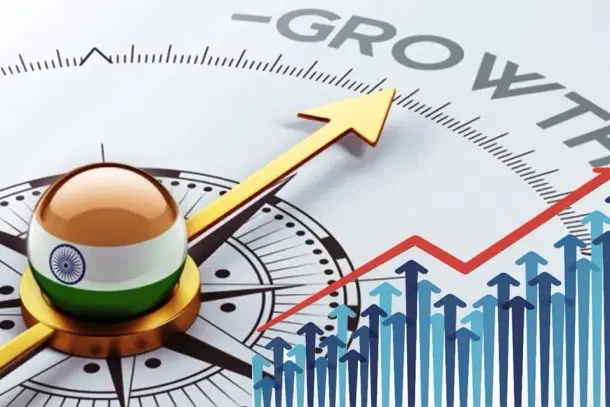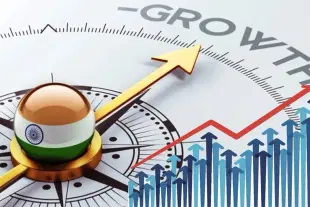News Brief
Morgan Stanley Cuts India's Growth Forecast to 6.3 Per Cent After Q2 GDP Data But Predicts Economic Recovery In Second Half
Vansh Gupta
Dec 03, 2024, 06:16 PM | Updated 06:16 PM IST
Save & read from anywhere!
Bookmark stories for easy access on any device or the Swarajya app.


Morgan Stanley has revised its GDP growth forecast for India to 6.3 per cent for the fiscal year 2024-25, a reduction from its earlier estimate of 6.7 per cent. The downward revision follows India’s GDP growth slowing to a seven-quarter low in the July-September period. This marks the second time the investment bank has cut its projection, previously lowering it to 6.7 per cent earlier in November.
India’s GDP expanded by 5.4 per cent year-on-year (YoY) in the July-September quarter, its lowest since March 2023. This is a notable drop from the 6.7 per cent growth recorded in the previous quarter and below both Morgan Stanley's earlier forecast of 6.3 per cent and the market consensus of 6.5 per cent.
The slowdown is attributed to weaker private consumption and capital expenditure (capex). While private consumption grew at 6 per cent, it outpaced the 5.4 per cent growth in capex. The services sector remained a bright spot, growing by 7.1 per cent, but the industry sector lagged behind with 3.9 per cent growth, dragged down by weak manufacturing and electricity performance.
Despite the Q2 slump, Morgan Stanley remains optimistic about the second half of FY25, forecasting a recovery in economic growth. The firm predicts GDP growth to average 6.6 per cent in the latter half of the fiscal year, driven by strong festive and wedding-season demand observed in October and November.
The recovery is expected to be fueled by increased government expenditure, improving rural demand, and easing financial conditions. High-frequency indicators from the last two months show a rise in economic activity, suggesting that the July-September period could be the bottom of the current slowdown cycle.
On monetary policy, Morgan Stanley anticipates that the Reserve Bank of India (RBI) will maintain its policy rates in the 6 December review. Inflation, currently above 6 per cent, is projected to ease to 5-5.5 per cent in the coming months.
However, the ongoing tight liquidity in the banking system may prompt the RBI to introduce liquidity-enhancing measures, such as open market operations (OMO) purchases. The weighted average call rate has already risen to 6.7 per cent due to liquidity deficits.
Morgan Stanley outlined three critical factors for sustained economic recovery: government spending trends, particularly revenue and capex; agricultural performance, including kharif and rabi crop output; and domestic financial conditions, which influence broader economic activity. These factors will be pivotal in determining India’s economic trajectory in the coming months.
Vansh Gupta is an Editorial Associate at Swarajya.





